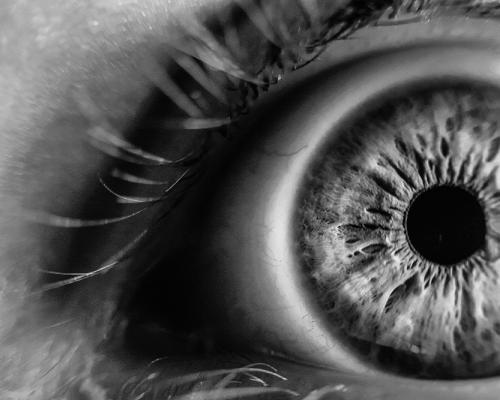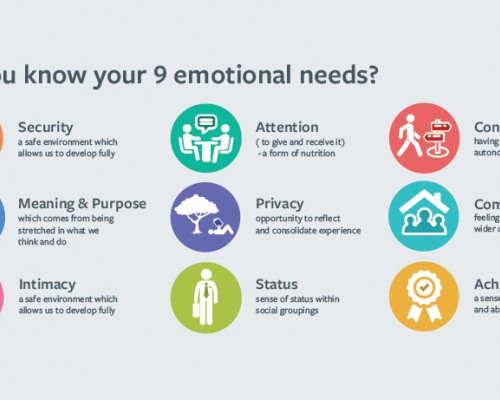The Trickster: Medicine's forgotten character
Therapy in all its forms can be confusingly capricious and unpredictable. We should not try to deny this, but learn to accept it, says Larry Dossey MD.
MOST physicians are trained to be thinkers, analysts, logicians. When we encounter clinical problems such as cancer, heart disease, or AIDS, our search for solutions begins with the assumption that we need more facts and information, which form the substrate upon which reason can operate. Only an approach anchored in analysis and reason, we say, stands a chance of working.
In contrast, many cultures have recognised that an intellectual approach to life's problems can be carried to excess. They have accorded great respect for irrationality and foolishness in its many forms — play, humour, nonsense, light heartedness. One of the most universal expressions of this point of view is the Trickster figure, which has appeared in the mythology and folklore of perhaps every culture on earth[1].
In modern psychology 'Trickster' is often used to refer to a universal force or pattern within the mind — what Jung called an archetype — that represents the irrational, chaotic, and unpredictable side of human thought and behaviour.[2] This aspect of the mind is contrasted with the logical, analytical, and intellectual side that values order, precision, and control. According to the tenets of depth psychology, a balance between these two vectors of the psyche is required for optimal mental heath. When either the rational or irrational side dominates, self correcting forces come into play to restore some semblance of harmony between the two. The countless Trickster tales describe how this process plays itself out in everyday life.
The Trickster operates largely outside conscious awareness but always from within the human mind. We are the Trickster; and when we describe Trickster phenomena we are always describing aspects of ourselves. Thus the Trickster has been called a speculum mentis: a mirror into the mind.
The Trickster in different cultures
Trickster lore flowered in the mythology of native North America, as well as in traditional cultures throughout the world. Not only does the Trickster exhibit trickery, buffoonery, and crude behaviour in indigenous tales, he also appears as a creator, cultural hero, and teacher. He is partly divine, partly human, and partly animal, and is an amoral and comic troublemaker. (I say 'he' because the Trickster is usually male, although occasionally female or disguised in female form.) Although he appears most frequently as the coyote in cultures in the south west of the USA, many other creatures are also represented. including the raven, crow, blue jay, mink, rabbit, spider, racoon, mud hen, opossum, and bear. Trickster figures also appeared in ancient Greece, where they were known as Prometheus, Epimetheus, and Hermes. In the European Middle Ages, the court jester or fool served the Trickster function. In our time clowns, comedians, movie actors, and cartoon characters often fulfil the role.
The Trickster and modern medicine
Probably everyone involved in healthcare sooner or later confronts the fact that all medical therapies, for all their power and popularity, can be frustratingly capricious, unpredictable, and sometimes harmful. This is true not only for drugs and surgical procedures but also for the alternative/ complementary and consciousness-based methods that are becoming increasingly popular. All therapies work only some of the time; they work sensationally for some people and not for others; they sometimes kill as well as cure. Moreover, scientific studies demonstrating efficacy often give conflicting results. They sometimes show that a therapy that was previously thought to be helpful is actually harmful, and vice versa.

The Trickster perspective suggests that some of these problems and paradoxes may result from too much, not too little, reliance on logic, analysis, and reason — the very bedrocks of modern science. Is the Trickster afoot in medicine? Evidence for Trickster effects is subjective but, in spite of this limitation, we can look at some specific areas in contemporary medicine where the Trickster may be leaving his tracks: areas where confusion and chaos arise in frustrating degrees. We shall notice that the confusion often takes the form of paradox.
- Nearly three and a half thousand Swedish business executives were given maximum attention to reduce their risk factors for cardiovascular disease. After five years of intervention and a total of 11 years of follow-up, even though they succeeded in reducing their risk factors by 46 per cent they had a higher mortality rate than control subjects.[3]
- In the highly publicised 'Mr Fit' (Multiple Risk Factor Intervention Trial) study, researchers at 22 medical research centres in the USA studied almost 13,000 men. Half of them received an all-out push by physicians to reduce their risk factors for heart disease. But at the end of seven years, even though they were successful in lowering their risk factors, their death rate was higher than that of the control group, for reasons that are still being debated.[4]
- According to a CNN report, air bags may be contributing to auto accidents by making drivers feel invincible.[5]
- "There is considerable inter-observer variability in the radiographic diagnosis of pneumonia. This variability does not improve with increasing experience."[6]
- Because most kidney stones are made of calcium, physicians often recommend that patients who have already suffered from stones reduce their calcium intake. A research team from the Harvard School of Public Health reports that men who ate a diet rich in calcium faced a 34 per cent lower risk of developing kidney stones than did men who consumed a restricted calcium diet. "This goes against everything we had been taught," says kidney specialist Gary Curhan, who led the calcium investigation.[7]
- Although the periodic health examination was introduced over 80 years ago, it remains a controversy in internal medicine. There have been few data from controlled studies to document the examination's efficacy for adults; nevertheless, its popularity has become a multi-million dollar industry in the United States.[8]
- A new study suggests that doctors and nurses should offer this seemingly paradoxical advice to patients awaiting surgery: "Don't relax, be worried." Although relaxation training before surgery helps people feel less tense, the investigators found that the greatest post-surgical increases in adrenaline and cortisol, two hormones associated with the body's reaction to stress and danger, were significantly higher among patients given relaxation training prior to their surgical procedure, compared to control subjects.[9]
- New evidence indicate that elderly men boasting low cholesterol levels also suffer markedly more symptoms of depression than peers with moderate or high cholesterol levels … Several cholesterol-reduction trials have found unexpected jumps in suicide and other violent deaths … Neither weight loss (which often lowers cholesterol) nor the presence of various medical problems accounted for the link between cholesterol and depression.[10]
- New data challenge the widely held assumption that US women, who usually enjoy higher levels of education, employment, and income, have healthier infants than immigrants. According to statistics from San Diego County from 1978 to 1985, the lowest infant mortality rates were seen in Southeast Asian and Hispanic women, most of whom were foreign born; highest rates were seen in white and African American women, most of whom were US born.[11]
- Professional working women enjoy lower blood pressure than women who stay at home. "Basically, the theory that job stress will make women as susceptible as men (to high blood pressure) doesn't bear out."[12]
Our usual approach to paradoxes such as these is to design more and better studies to clear up the ambiguities. The problems, we say, are not a failure of reason but a lack of sufficient information to which reason can apply itself. Can we eradicate all the confusion with good studies? It would be foolish not to employ our intellect as skilfully as possible. But how fully can reason serve us without becoming susceptible to the self-correcting, intra-psychic forces of irrationality and unpredictability?
Alternative medicine and the trickster
Alternative/ complementary medicine also generally follows a rational, causal framework: If you do X, Y will follow — whether X means taking vitamins or herbs, using a homoeopathic remedy, or praying, imaging, or meditating. In alternative circles, as in orthodox medicine, heroic vigour and assertiveness are also routinely emphasised, epitomised by the frequent advice that patients "take charge," "assume responsibility," and "fight" their illness. As complementary medicine attempts to match the intellectual rigour of orthodox medicine, there is a risk that it, too, may ignore the Trickster forces in the psyche.
Many researchers and clinicians in alternative medicine realise that it may be impossible to subject some healing methods to the rational strategies favoured in contemporary biomedical research, such as double-blind methodology. Consider, for example, studies involving the effect of prayer among patients who are seriously ill.[13] How can one establish a control group that, by definition, should receive no prayer? People facing serious illness routinely pray for themselves, whether or not they belong to a control group. Even if they did not, their loved ones pray for them. No one has yet devised a way of annulling the 'problem of extraneous prayer'. An alternative research approach has been to study the effects of prayer not on humans but on non-humans — assessing, for example, the effects of prayer on growth rates of bacteria [14] or fungi [15,16] or on the healing rates of surgical wounds in rats or mice.[17,18] Presumably the bacteria or mice in the control group do not pray for themselves, nor are they being prayed for by their fellow creatures.
In spite of these difficulties, however, we should not abandon the customary forms of investigation that are based in reason in favour of an 'anything goes' policy, for this approach would lead to the opposite excess in which too little, not too much, reason is employed.
The Trickster and the creative process
The Trickster, therefore, suggests not that we abandon our rational faculties altogether, but that reason must be complemented by unreason if it is to achieve full flowering. Nowhere is this lesson clearer than in the creative process of great scientists.

When Jonas Salk was researching the polio vaccine that would bear his name, he decided to distance himself from his work for a short period by going to the monastery of Assisi in Italy. Salk had a keen interest in architecture, and his encounter with the shapes and spaces, light, materials, colours, and the history of this monastery had a profound impact on his mind and spirit. Salk became highly energised. "Under the influence," he later recalled, "I intuitively designed the research that I felt would result in the desired vaccine. I returned to my laboratory in Pittsburgh to validate my concepts and found that they were indeed correct!"[19] Salk's experience is not unique. Throughout history researchers often have achieved success only when they allowed play and other distractions to mingle with the intellect — in other words, when they have invited the Trickster to come out to play.
Arthur Koestler observes in his landmark book, The Act of Creation: "The creative act, in so far as it depends on unconscious resources, presupposes a relaxing of the controls and a regression to modes of ideation which are indifferent to the rules of verbal logic, unperturbed by contradiction, untouched by the dogmas and taboos of so-called common sense. At the decisive stage of discovery the codes of disciplined reasoning are suspended — as they are in a dream, the reverie, the manic flight of thought, when the stream of ideation is free to drift, by its own emotional gravity, as it were in an apparently 'lawless' fashion."[20]
The paradoxes involved in the creative process are vividly exemplified in the life of England's Michael Faraday (1791-1867), one of the greatest physicists in history. Perhaps the most remarkable fact about Faraday is that he lacked any mathematical education or gift, and was "ignorant of all but the merest elements of arithmetic."[20] Faraday was a visionary in the literal sense. He was able to see stress lines around magnets and electric currents as curves in space, for which he coined the term lines of 'forces'. For him, these patterns were as real as if they were made of solid matter. These images "rose up before him like things" and proved incredibly fertile, leading to the birth of the dynamo and electric motor, and the postulate that light was electromagnetic radiation – and this with only "the security of instinct, without the help of a single mathematical formula."[21]
Writing in the 1950s in Scientific American, Frank Barron, an expert on the psychology of imagination, captured the essentially un-harnessable nature of the creative process:
"Creative individuals are more at home with complexity and apparent disorder than other people are … The creative individual in his generalised preference for apparent disorder, turns to the dimly realised life of the unconscious, and is likely to have more than the usual amount of respect for the forces of the irrational in himself and in others … The creative individual not only respects the irrational in himself, but courts it as the most promising source of novelty in his own thought. He rejects the demand of society that he should shun in himself the primitive, the uncultured, the naive, the magical, the nonsensical … When an individual thinks in ways which are customarily tabooed, his fellows may regard him as mentally unbalanced … This kind of imbalance is more likely to be healthy than unhealthy. The truly creative individual stands ready to abandon old classifications and to acknowledge that life, particularly his own unique life, is rich with new possibilities. To him, disorder offers the potentiality of order."[22]
Barron's statement might well serve as a kind of Trickster manifesto, emphasising as it does the central role of the irrational, chaotic elements of the psyche in the creative process.
Discovery as trickery and deception
In Greek mythology the classic Trickster figure is Hermes, the fleet-footed messenger of the gods and the deity of speech, communication, and writing, whose first act as a baby was to steal cattle from Apollo. Thus we see in Hermes the qualities of thievery, trickery, and deceit combined with the skill of communication.

This may appear to be an odd combination of traits, but if we look closely we can see that the pairing of deception and communication makes sense. Because Trickster happenings are paradoxical, confusing, and chaotic, they take us off guard mentally and jolt us into seeing unexpected patterns and new meanings. The writer G K Chesterton emphasised this 'breakthrough' potential by defining paradox as Truth standing upside down to attract attention. In the wake of paradox we see connections and patterns to which we were previously blind. It is as if our normal modes of perception have been tricked. The logical mind, accustomed to following old paths of reason previously laid down, is momentarily side-tracked into a different mode of perception. A new communication channel with the universe suddenly opens and grand patterns are revealed — creativity and discovery as a prank played on the habits of reason.
Trickster effects in healing
Similar processes happen in healing. Myrin Borysenko was a prominent researcher in immunology at Tufts University School of Medicine. He was intrigued by the work of Harvard's David McClelland on the impact of belief in healing. On one occasion Borysenko asked McClelland how a particular healer in the Boston area healed people. "Oh, he messes up your mind," McClelland replied.
One morning while at his laboratory Borysenko began to come down with symptoms of flu — fever, aches, cough, and congestion. By noon he felt miserable. Unable to function, he decided to leave work and go home to bed. On his way home he suddenly thought of the psychic healer he had discussed with McClelland. Why not give the healer a try? There's no adequate alternative treatment, he thought, and no one will ever know.
He found the healer in a dilapidated part of the city. As he climbed the rickety stairs he began to have second thoughts. What if my colleagues could see me now? he worried. The door to the healer's apartment was open, as if Borysenko were expected. He entered to find an enormously fat, unkempt man sprawled on a sofa watching a soap opera on TV and drinking wine from a gallon jug. Summoning his courage, Borysenko said, "I hear you can cure people. Can you cure my flu?" Without taking his eyes off the TV, the healer reached for a small bottle of purple liquid on the floor. "Go into the bathroom, fill the tub half full of water, pour this stuff in, and sit in it for 30 minutes. Then you will be cured."
Borysenko did as he was told. As he sat in the tub, up to his waist in the densely purple water, he was struck by the sheer absurdity of what he was doing. He felt so silly he began to laugh uncontrollably. He was still laughing when he realised his half-hour was over. He dressed and walked to the living room to find the healer still engrossed in the soap opera. He simply said, "Now you are healed." Then he pointed to the door, indicating he was free to go.
Driving home, Borysenko gradually realised he felt different. He sensed no symptoms whatever. He felt well — so well that he decided to return to work. He worked late. As he recited his adventure that night to his wife while undressing for bed, she suddenly burst into laughter. Looking into the mirror, he knew why. He was purple from the waist down.
Borysenko's healer was a first-rate Trickster — one who upsets expectations, creates confusion, and jumbles the normal categories of thought. Borysenko was enticed to abandon everything he believed about how healing worked, put his intellect on hold, and simply "let it happen."
It is perfectly natural to try to find approaches to healing that are completely objective and that can be successfully applied to all individuals who have the same illness. One might try, for example, to reduce Borysenko's experience to an algorithm whereby every patient with a diagnosis of flu is advised to add a specific amount of purple liquid to his bath water. But when used in a repetitive, formulaic way, these approaches rarely work as dramatically as for Borysenko, perhaps because they do not 'mess up the mind', as McClelland put it. This is perhaps one reason behind the adage, "One should use a new medication as often as possible, while it still has the power to work."
Arrogance and the Trickster
As long as we lie to ourselves, the Trickster will be with us. He'll show up just when we least want him, to embarrass us on a first date, to prove us fools in front of the learned company we're trying to impress, to make us miss a power breakfast with that all-important business contact. Yes, he'll leave at our bidding, but he always comes back with a vengeance. The only way to get rid of him is to listen to his message — and to admit the truth about ourselves in all its beauty and ugliness.
The Trickster not only deceives others, he is always being duped, often by pranks that backfire. Trickster tales show that humiliation is never far away; thus the Trickster warns of the dangers of arrogance and hubris. When we make rash assurances to patients that "everything will be fine," that our favoured therapy is sure to work, or that we can find the problem when a string of other diagnosticians has failed, we are setting ourselves up to be tricked. "You can think as much as you like," the Russian proverb warns, "but you will invent nothing better than bread and salt."
(This article first appeared in Alternative Therapies (1996), 2, 2. It is reproduced here with kind permission.)
References
- Abrams, J (1994). The Shadow in America. Novato, Calif: Nataraj.
- Jung, C G (1968). On the psychology of the trickster-figure. In: The Archetypes and the Collective Unconscious. 2nd ed. Princeton University Press, NJ.
- Strandberg, T E (1991). Long term mortality after 5-year multi-factorial primary prevention of cardiovascular diseases in middle-aged men. Journal of the American Medical Association, 266, 9, 1225–1229.
- Sagan, L A (1988). Family ties: the real reason people are living longer.The Sciences. March/April, 21–29.
- Reported on Cable News Network (CNN), December 27, 1994.
- Young, M and Marrie, T J (1994). Inter observer variability in the interpretation of chest roentgenograms of patients with possible pneumonia.Archives of Internal Medicine, 154,2729–2732.
- Monastersky, R (1993). Kidney stones: don't curb the calcium. Science News. March 17, 143,196.
- Mitchell, H C (1981). The periodic health examination: genesis of a myth.Annals of Internal Medicine, 95, 733–735.
- Bower, B (1992). Anxiety before surgery may prove healthful. Science News, June 20, 141, 407.
- Bower, B (1993). Depressing news for low-cholesterol men. Science News, January 16, 143, 37.
- Voelker, R. Born in the USA: infant health paradox. Journal of the American Medical Association, 272, 23, 1803–1804.
- Bower, B (1995). Blood pressure lower for working women. Science News, July 1, 148, 6.
- Byrd, R C (1988). Positive therapeutic effects of intercessory prayer in a coronary care unit population. South Med. J, 81, 826–829.
- Nash, C B (1982). Psychokinetic control of bacterial growth. Journal of the American Society for Psychical Research, 51, 217–221.
- Barry, J (1968). General and comparative study of the psychokinetic effect on a fungus culture. Journal of Parapsychology,32, 237–243.
- Tedder, W H and Monty, M L (1980). Exploration of long distance PK: a conceptual replication of the influence on a biological system. In: W G Roll (ed) Research in Parapsychology. Scarecrow Press, Metuchen, NJ.
- Grad, B R (1965). Some biological effects of laying-on of hands: a review of experiments with animals and plants. Journal of the American Societyfor Psychical Research, 59, 95–127.
- Grad, B R, Cadoret, R J and Paul, G I. (1961). The influence of an unorthodox method of treatment on wound healing in mice. International Journal of Parapsychology, 3, 5–24.
- Dr Jonas Salk, (1914-1995): A tribute. American Architectural Foundation News. AIARCHITECT. September 1995,20.
- Koestler, A (1994). The Act of Creation. Dell/ Laurel, New York, NY.
- Kendall, J (1955). Michael Faraday. Faber, London.
- Barron, F (1958). The psychology of imagination. Scientific American,September.
 Spread the word – each issue of the Human Givens Journal is jam-packed with thought-provoking articles, interviews, case histories, news, research findings, book reviews and more. The journal takes no advertising at all, in order to maintain its editorial independence.
Spread the word – each issue of the Human Givens Journal is jam-packed with thought-provoking articles, interviews, case histories, news, research findings, book reviews and more. The journal takes no advertising at all, in order to maintain its editorial independence.
To survive, however, it needs new readers and subscribers – if you find the articles, case histories and interviews on this website helpful, and would like to support the human givens approach – please take out a subscription or buy a back issue today.
Latest Tweets:
Tweets by humangivensLatest News:
HG practitioner participates in global congress
HG practitioner Felicity Jaffrey, who lives and works in Egypt, received the extraordinary honour of being invited to speak at Egypt’s hugely prestigious Global Congress on Population, Health and Human Development (PHDC24) in Cairo in October.
SCoPEd - latest update
The six SCoPEd partners have published their latest update on the important work currently underway with regards to the SCoPEd framework implementation, governance and impact assessment.
Date posted: 14/02/2024















